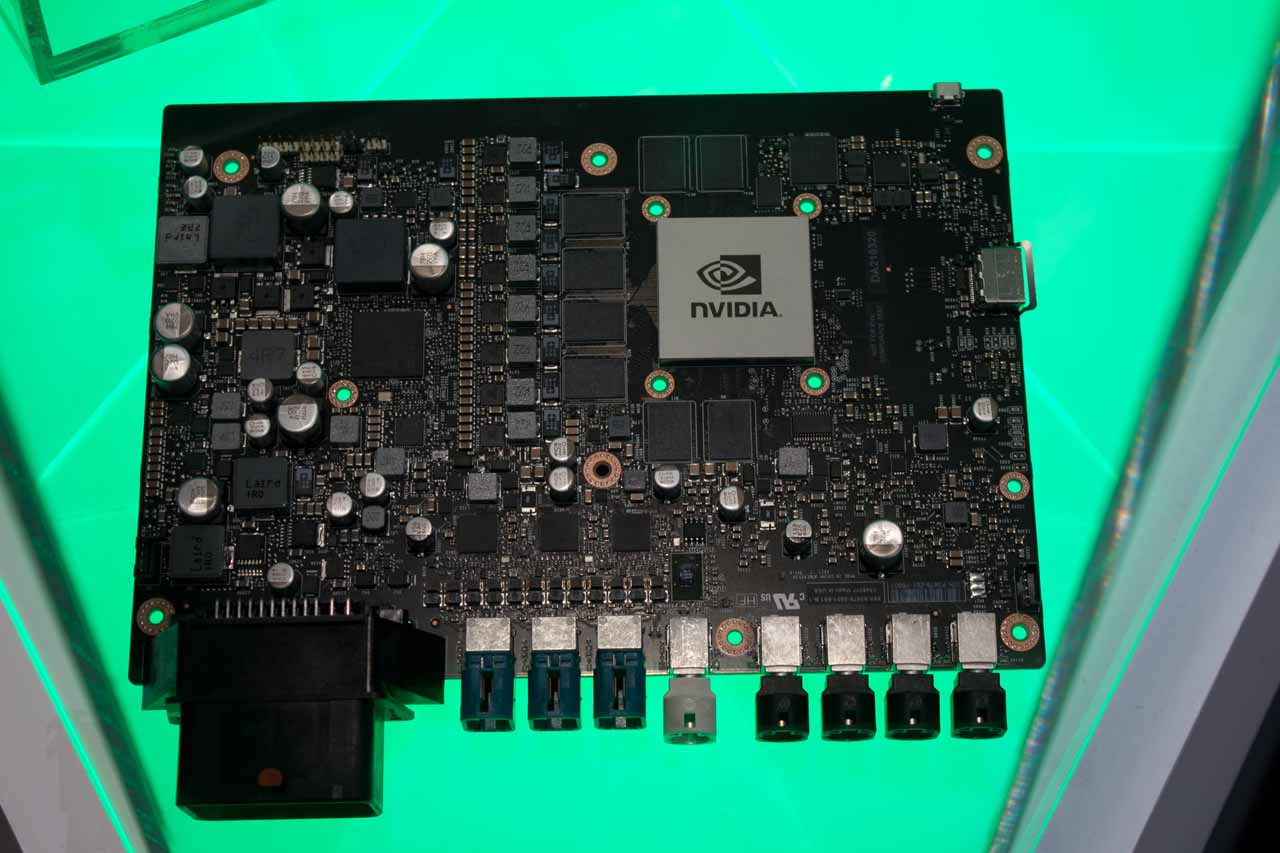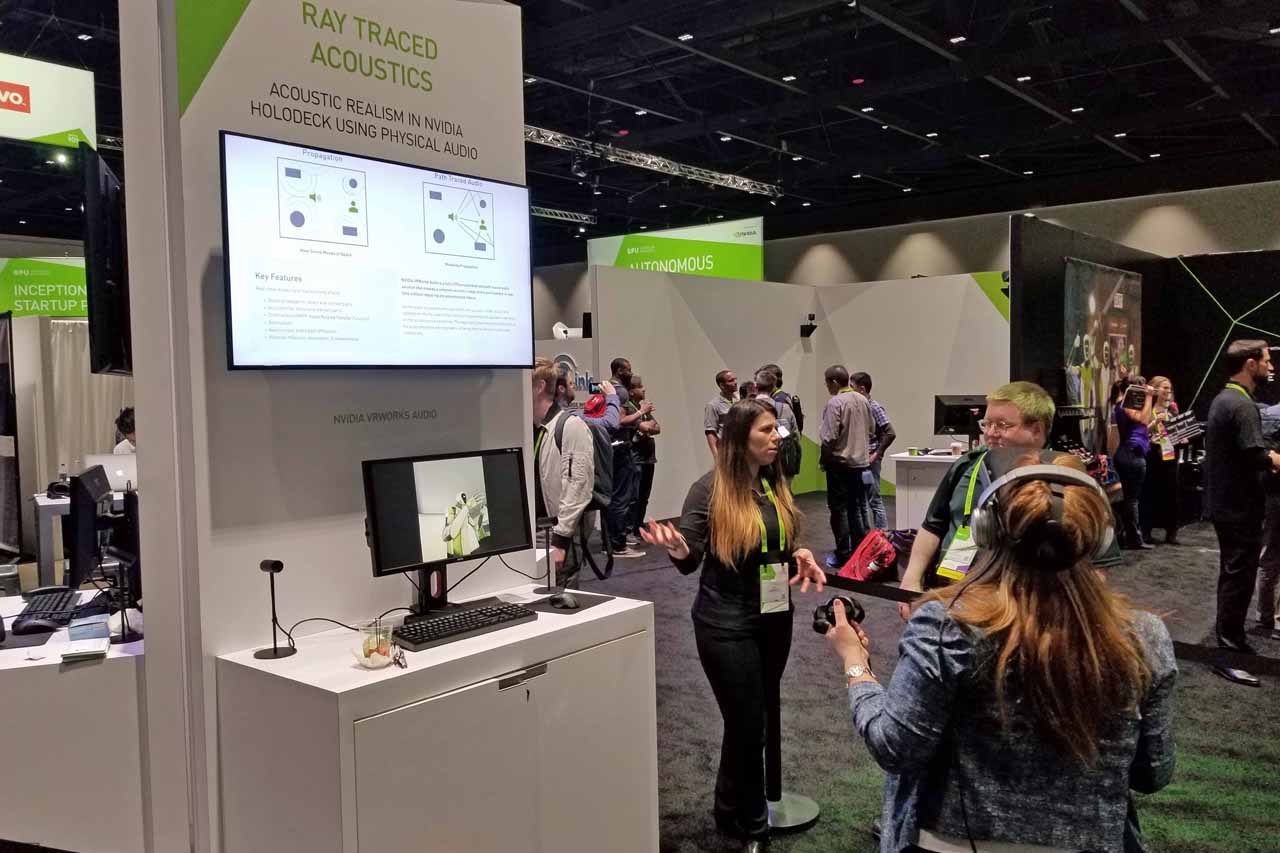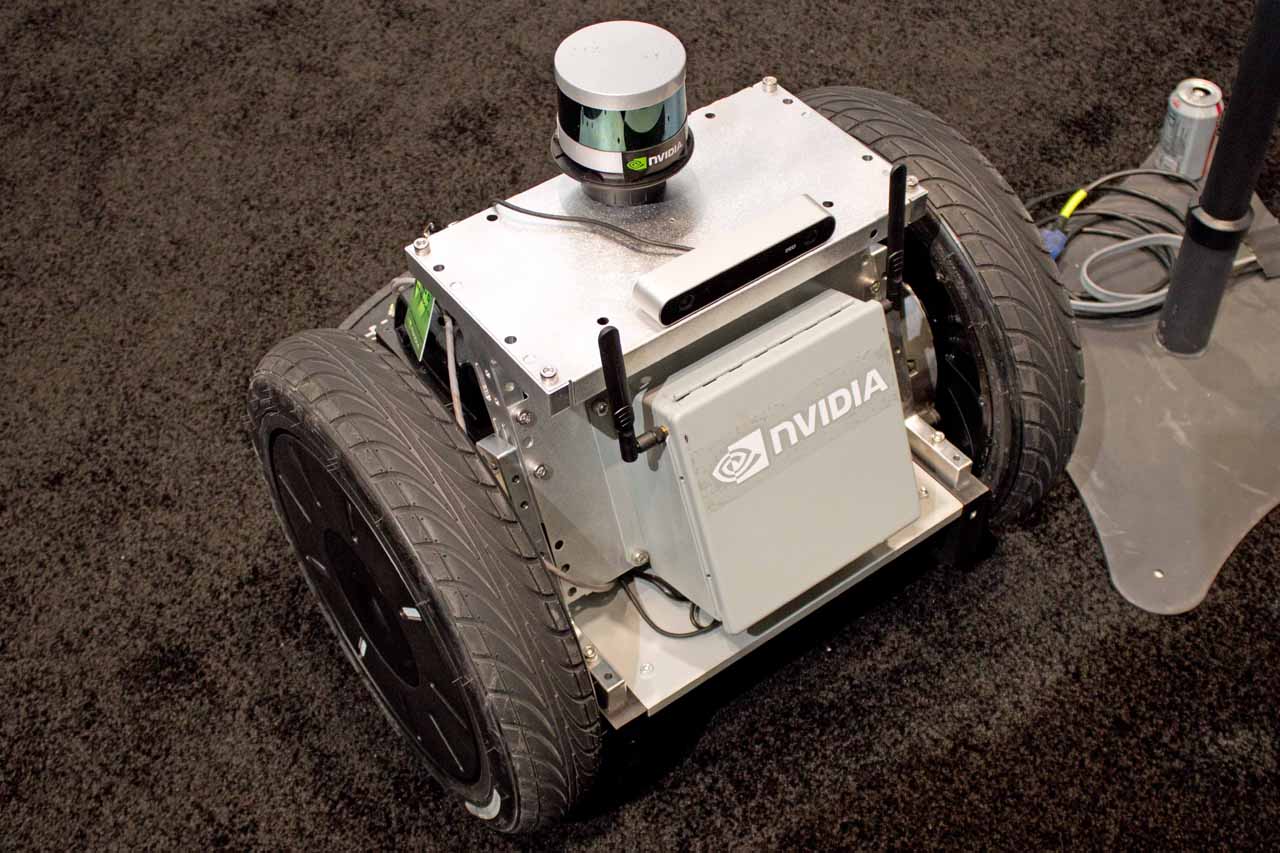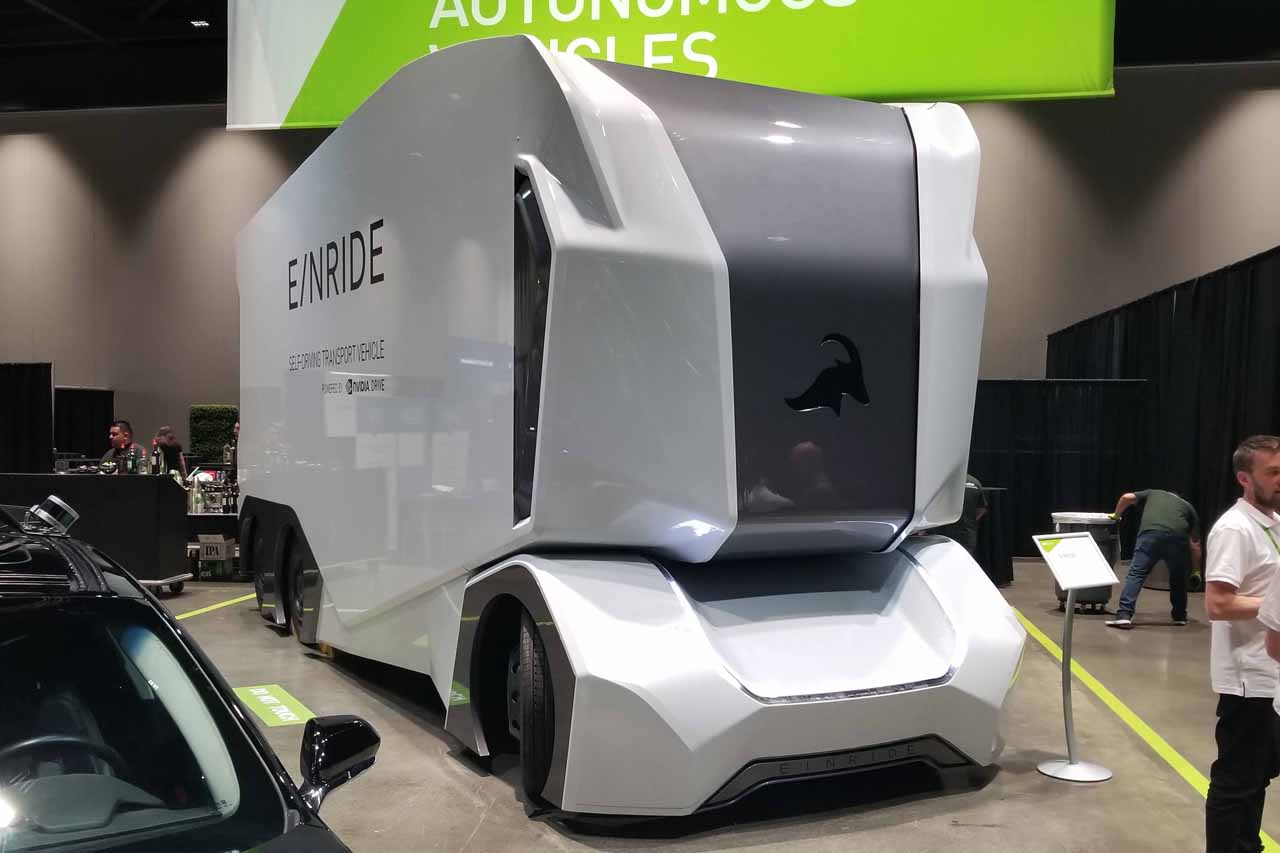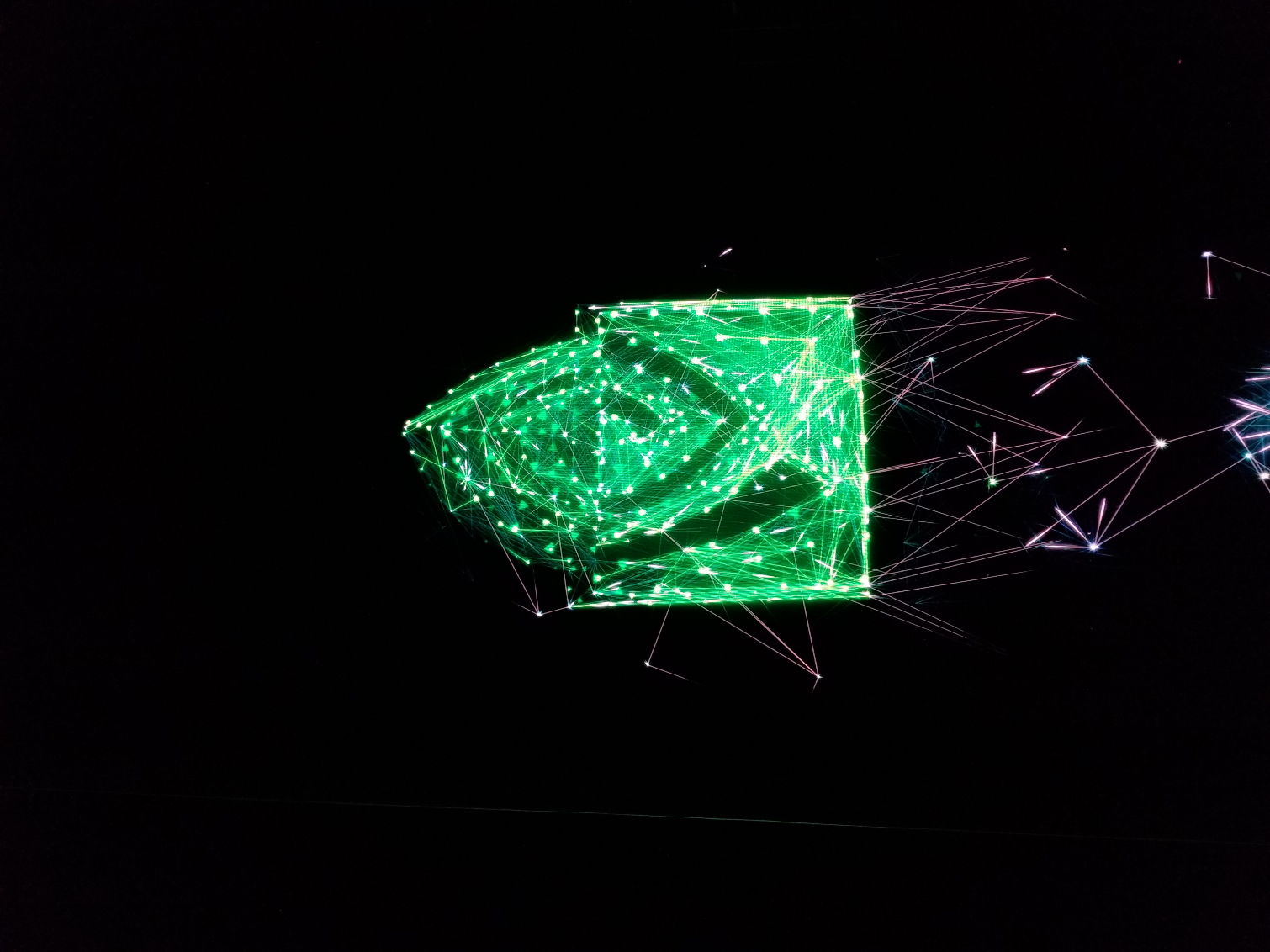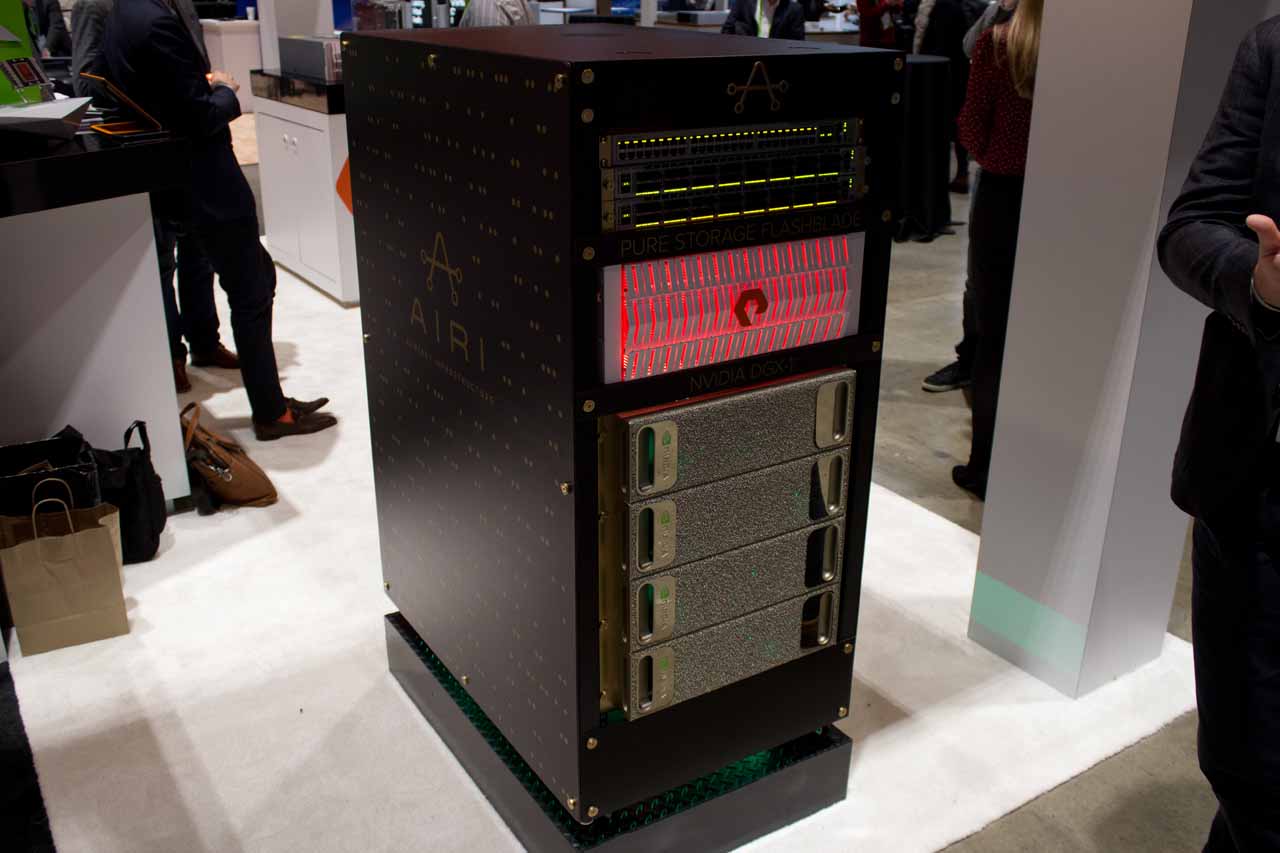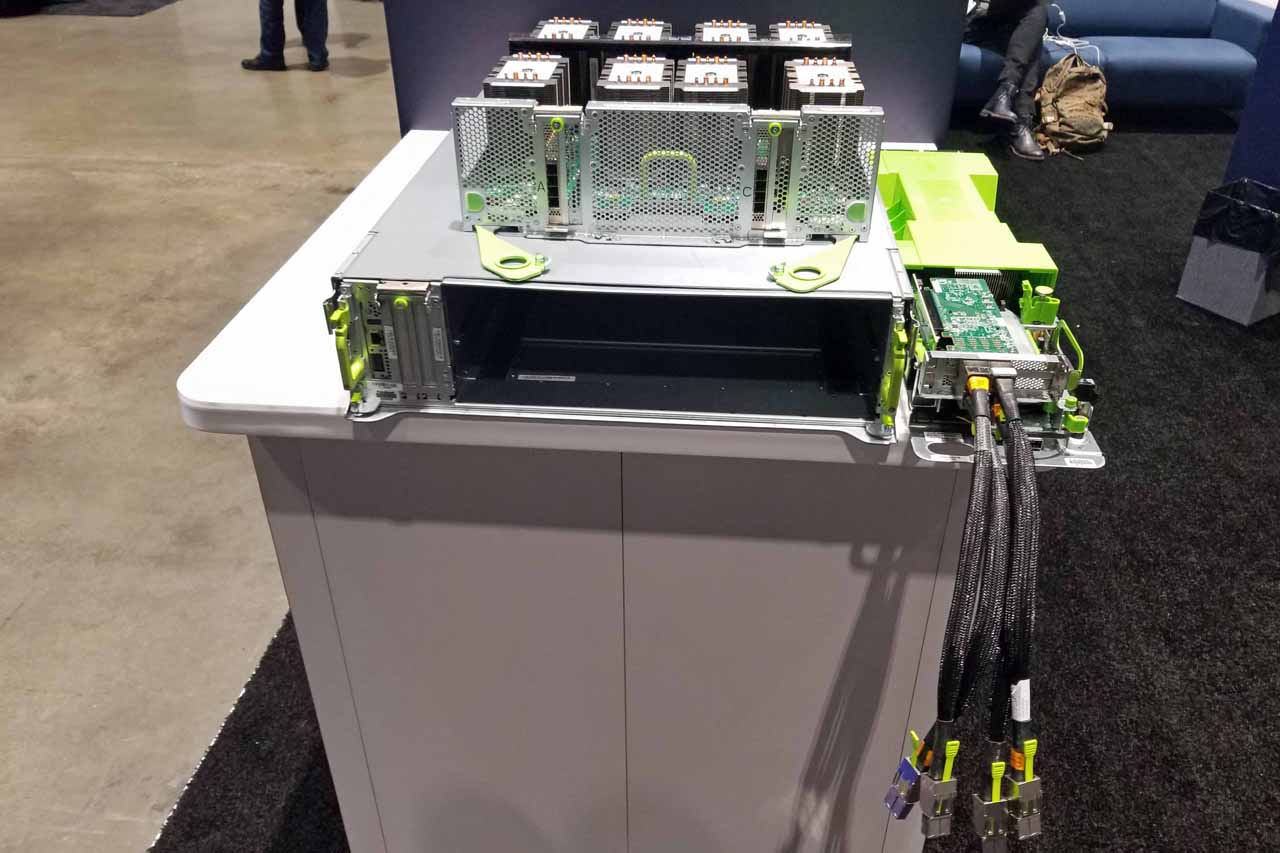Nvidia GTC 2018 Highlights: AI Trucks, Mega-Video Cards & Ray Tracing
The DRIVE Xavier
DRIVE Xavier is Pegasus's smaller brother. This system features Nvidia's Xavier SoC that comes packing 7 billion transistors built on the 16nm FinFET process. The entire system sips only 30W of power and features a custom eight-core ARM64 CPU and a Volta GPU with 512 cores. It also comes outfitted with computer vision accelerators and 8K HDR video processors.
Ray-Traced Audio Is A Thing
Real-time ray-traced video was all the rage at GDC and GTC 2018, but ray tracing can also be used for acoustics. This technique uses GPU acceleration to map out how sound travels in various rooms, such as large open spaces or restrictive small offices, to deliver a more realistic audio experience. Unlike previous audio solutions, ray tracing allows the compute engine to conduct these operations in real time without using pre-computed filters.
Isaac Powers Carter
As we covered earlier, Nvidia announced its Isaac SDK at the show. The company also had its new Carter reference design on the show floor. This diminutive little robot is designed to cart around objects in various environments, so it essentially serves as a delivery robot. Nvidia envisions small robots like these undertaking various tasks in busy environments. Carter isn't quite ready to navigate the overflowing show floor though. This was a static demo.
Truckers, Beware
Our picture of Einride's autonomous T-Pod delivery vehicle doesn't do justice to its sheer size. The massive vehicle is designed from the ground up to be an autonomous delivery truck; it doesn't even have a cab.
The electric truck can only travel 124 miles between charges for now, much to the relief of long-haul truckers everywhere. The truck can drive by itself on highways, but requires human assistance (via remote control) on city streets. The company plans to begin selling the new trucks this fall and hopes to have 200 trucks on the road in Sweden soon.
GPU Processing Comes To RAID
Nyriad came to the show with an interesting demo that highlights how GPUs can be used for unique applications. In this case, the company uses Nvidia's GPUs to calculate RAID parity.
Parity calculations allow RAID arrays to protect data in the event of a device failure, but the parity calculations result in decreased performance until the failed device is replaced and the RAID controller reconstructs the data. Nyriad's solution uses the massive parallel computing power of a GPU to provide an incredible amount of resilience during drive failures, all while delivering the same amount of performance.
Get Tom's Hardware's best news and in-depth reviews, straight to your inbox.
Things Get AIRI
Pure Storage had its new AI-Ready Infrastructure (AIRI) demo on the show floor. The system features four of Nvidia's DGX-1 systems, with eight Tesla V100's apiece, fused together with Pure Storage's FlashBlade. Merging any form of storage with remote compute always incurs some type of latency penalty, but Pure uses Nvidia's GPUDirect RDMA and 100GbE Arista switches to reduce the impact. The system uses Nvidia's GPU Cloud deep learning stack and Pure's AIRI scaling toolkit to provide up to four PetaFLOPS of performance in a single rack.
Exploring Big Basin
Facebook's Big Basin is an open-source design that the company shares through the OCP (Open Compute) initiative. The primary box, called a JBOG (Just-A-Bunch-of-GPUs), houses eight V100's connected via NVLink in a hybrid mesh similar to the DGX-1. The JBOG slides into the main housing and is installed into a server rack.
The unit to the right houses two Xeon processors and all of the normal components of a server. The flexible PCIe 3.0 x8 cables connect the server to the JBOG. This design allows Facebook to upgrade the CPUs and GPUs independently of each other, thus providing upgrade flexibility as more powerful models come to market.

Paul Alcorn is the Editor-in-Chief for Tom's Hardware US. He also writes news and reviews on CPUs, storage, and enterprise hardware.
-
dudmont Without a new GPU release to report, I'm betting draft day for the Chiefs(or my Vikings) will be markedly more interesting. Lemonade from lemons?Reply -
mischon123 "overflowing with demos, presentations, tutorials, and sessions".Reply
Screw that.
We only want speed, low latency and 100% compatiblity. @Nvidia cut the expensive marketing out. If you have a good product in the pipeline - make it an engineers product. Fluff just adds to your cost and ours. 5 star ratings and good reviews sell products. The guys and girls in skinnies are just leeches. -
envy14tpe I'm sitting on my 2.5yr old 980ti waiting to hear what the new Nvidia GPU I will buy is. In the meantime, GO PACK.Reply -
bit_user Robotics is one of those cases where you really want ECC memory (i.e. a Tesla GPU). A robot that big could take somebody's head off.Reply
-
bit_user Reply
I'm not sure what you're talking about, but this event was aimed squarely at professionals, engineers, and researchers. Try browsing the agenda.20845282 said:"overflowing with demos, presentations, tutorials, and sessions".
Screw that.
We only want speed, low latency and 100% compatiblity. @Nvidia cut the expensive marketing out. If you have a good product in the pipeline - make it an engineers product. Fluff just adds to your cost and ours. 5 star ratings and good reviews sell products. The guys and girls in skinnies are just leeches.
https://2018gputechconf.smarteventscloud.com/connect/search.ww -
bit_user Reply
How do you think they got so big in deep learning and high-performance computing? It's because they invested a lot in those markets, via things like GTC. Those investments are now paying dividends, which will in turn benefit gamers.20846139 said:@Nvidia - stop wasting money on pointless adverstisement and hyperbole. You will not make any money for shareholders by wasting their money more than you can recover in imaginary profit. Serve the real people that make your company money; the middle income population. Sheesh, you think Nvidia would know things after all these years O.o
So, you're complaining that they haven't released two full generations in 2.5 years? Talk about entitled...20846583 said:I'm sitting on my 2.5yr old 980ti waiting to hear what the new Nvidia GPU I will buy is.
Right. So, this conference (GTC = GPU Technology Conference) is not for you. In case you haven't noticed, the world doesn't revolve around gamers. Sure, gamers helped fund the early development of programmable GPUs, but the technology has grown beyond gaming, and that's what this is about.20846583 said:In the meantime, GO PACK.
For gaming-oriented GPU news, see their GDC (Game Developers Conference) coverage:
http://www.tomshardware.com/picturestory/824-gdc-2018-highlights-vr.html
Also, unlike GTC, it's not a Nvidia-centric event.
